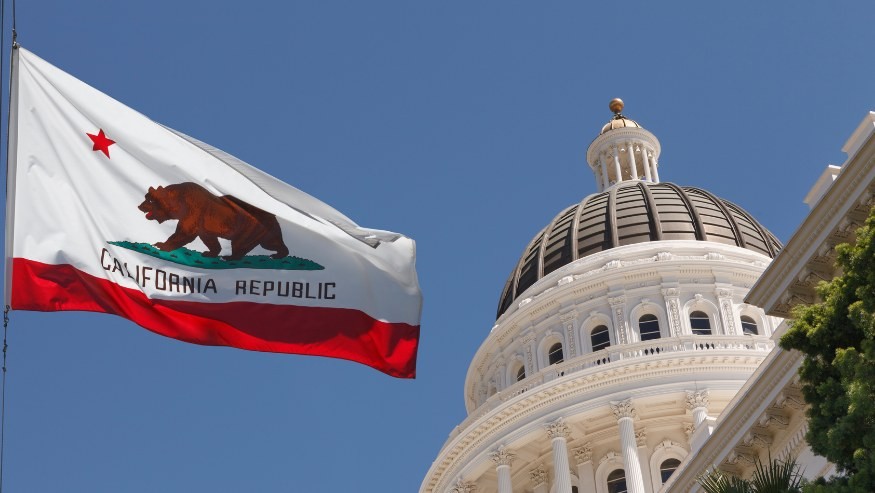California education budget 2023-24

Sustained support for core education programs
For California children in public schools, the final, enacted state budget for 2023-24 delivers steady support despite a stock market unnerved by a spike of inflation.
The main portion of the education budget each year funds a system known as the Local Control Funding Formula (LCFF). This is the money that goes directly to school districts to pay for operating costs like educators, administrators, counselors, transportation, building maintenance, etc. To sustain the purchasing power of school systems, this year’s budget includes the largest cost-of-living adjustment (COLA) in the history of the LCFF system (8.22%). The budget also increased resources for special education, transitional kindergarten, nutrition, and preschool.
In other good news, the budget continues to support ongoing priorities such as community schools, before- and after-school programs and summer learning.
A note of caution
Budgets are built on predictions. Will Californians actually earn income and pay taxes at the levels predicted in the budget by the state Department of Finance? No one knows for certain.
The state Legislative Analyst Office (LAO), which is independent from the Department of Finance, has warned that it regards the budget forecasts as on the high end. It cautions that a $30 billion shortfall is likely in future years under these assumptions. If this prediction comes to pass, Dan Walters of CalMatters argues that new cuts or new revenues will be necessary to find balance. The state Department of Finance tracks key indicators monthly.
Many planned investments have parents smiling
The budget contains many investments that parents and communities have asked for. Let’s take a look.
Screening for risks of dyslexia: At last, California has a plan. The budget provides $1 million to convene an independent panel of experts to create a list of approved methods to screen all children grades K-2 for the risk of reading difficulties, including dyslexia, by the 2025-26 school year.
The Arts and Music in Schools: Voters passed the Art and Music K-12 Education Funding Initiative (Prop 28 of 2022), guaranteeing funding for arts education. (Nearly $1 billion in 2023-24)
Free meals in school: California was the first state to make free meals universal in schools. Five other states have followed so far.
Equity multiplier: New in 2023-24, schools with the highest concentrations of low-income students, English learners, homeless, and foster youth students will receive additional funding through an equity multiplier. The budget provides $300 million in new, ongoing funding to accelerate learning gains and close opportunity gaps of historically underserved students.
|
Additional investments in the 2023-24 enacted budget |
|
|---|---|
|
Evidence-based literacy: Ed100 blog: Too many students can’t read |
High-poverty schools are funded to train (using evidence-based practices) and hire literacy coaches and reading specialists for one-on-one and small group intervention for struggling readers. |
|
Transitional kindergarten expanded: One additional certificated or classified staff person is added to every transitional kindergarten class. |
2022-23: all children turning five-years-old between September 2 and February 2 (roughly 29,000 children). 2023-24: all children turning five-years-old between September 2 and April 2 (roughly 42,000 additional children) to support the second year of expanded eligibility for transitional kindergarten. |
|
Pre-school more affordable: Ed100 blog: How does California's Pre-K education system work? |
The family fee schedule for the State Preschool Program beginning October 1, 2023, now: (1) limits family fees to one percent of a family’s monthly income, and (2) prohibits the assessment of a fee for families with an adjusted monthly income below 75% of the state median income. State Preschool Program family fee debt that accrued but remained uncollected prior to October 1, 2023 is to be forgiven. |
|
Special education transparency |
Each district and charter school in California is required to join a Special Education Local Plan Area (SELPA). The California Department of Education must post each SELPA’s annual local plan, including their governance, budget and services plans, on its website. |
|
Arts and Music in Schools Funding Guarantee and Accountability Act: Ed100 blog: Schools have new money for arts education. What should they do now? |
Proposition 28 funding of approximately $938 million will increase arts instruction and/or arts programs in public education. |
|
Reversing opioid overdoses |
Middle schools, high schools, and adult school sites will maintain at least two doses of naloxone hydrochloride or another medication to reverse an opioid overdose on campus for emergency aid. |
|
Educator workforce: Ed100 blog It's time to change how we value teachers |
Teacher credentialing, residency grants, and educator diversity laws were enacted to support those entering the teaching profession. |
How does California pay for this? Education budget basics
Funding for public K-12 education in California comes from three main sources: state income taxes, local property taxes, and the federal budget, in that order.
State income taxes that go toward education are strongly influenced by the economy, the stock market, and the terms of Proposition 98, passed by voters in 1988. Prop. 98 defines a minimum level of spending that the state is obligated to allocate to public education. The combination of expected property tax receipts for education and state funds for education are known as the Prop. 98 minimum funding guarantee.
Property taxes that go toward education (and which are included in calculation of the Prop 98 guarantee) were more or less set in stone by voters who passed Proposition 13 in 1978.
Federal funds for public education were temporarily elevated by pandemic programs.
Proposition 98 funding
California voters amended the state constitution in 1988 by passing Proposition 98. This measure obligates the state to spend a certain percentage of the General Fund on public education each year. State general funds for education, plus local property taxes for education, in combination, are known as Proposition 98 funds. Driven by changes in the economy and the stock market, the 2023-24 education budget remains below the high mark two years ago.
|
Proposition 98 funding “guarantee” |
||
|---|---|---|
|
2021‑22 |
$110.6 billion |
38.5 percent of the state General Fund plus local property tax revenues. |
|
2022‑23 |
$107.4 billion |
38.5 percent of General Fund plus local property tax revenues. |
|
2023‑24 |
$108.3 billion |
38.5 percent of General Fund plus local property tax revenues. |
How is the money spent? Well, glad you asked. Here’s the link to K-12 Proposition 98 Funding by Program. The top five programs are the Local Control Funding Formula (most of the funding), followed by special education, expanded learning opportunities, state preschool, and child nutrition.
Per pupil funding sustained
The line graph below shows how per pupil funding in California has increased over time, even in the pandemic. Note that this chart calculates dollars per student enrolled as of the October “census” date. Other sources may show a slightly higher figure per student because (unlike most states) California funds schools according to Average Daily Attendance (ADA).
If you look at the dashed line in the chart above, it shows that California funding per pupil increased significantly since 1988-89. That’s great news, right?
But when adjusted for inflation — the solid line — the news doesn’t look as good. Yes, revenue has grown. But so has the cost of running a school. School funding in 2023-24 has just about kept pace with inflation. A loaf of white bread cost about 60 cents in 1988. The same loaf costs about $1.89 in 2023.
Total education funding
In addition to the Prop. 98 sources, which are state and local, the federal government provides ongoing support for things like nutrition, special education, aid for low performing schools, and support for disadvantaged children. For a few years it also provided money to public schools for pandemic relief.
California no longer lurks in the basement of national school funding.
The 2023-24 enacted budget total education funding is $129.2 billion ($79.5 billion General Fund and $49.7 billion other funds) for all K-12 education programs.
With core state and local funding at $17,658 per student in average predicted daily attendance for 2023-24, California funding no longer lurks in the national basement of national school funding. The state is now probably in the middle of the pack… but no one really knows. Governments compile data with excruciating slowness. Comparable data will take years to emerge.
Local Control Funding Formula
Prop. 98 funding is mostly distributed on the basis of student attendance. School districts, charter schools and county offices of education receive additional funding for low income students, English learners, homeless and foster youth under a system known as the Local Control Funding Formula (LCFF). The base funding amount per student in attendance varies a little by grade level. Added to that is supplemental funding based on the number of students with higher needs. Districts with a very high percentage of needy students get even more support through a concentration grant.
Below are the LCFF funding rates for 2023-24
|
LCFF Funding rates for 2023-24 |
|||
|---|---|---|---|
|
Grade span |
Base Grants |
Supplemental Grant |
Concentration Grant |
|
TK/K‑3 |
$10,951 |
20% more funding based on the LEA’s percentage of students with higher needs (English learners, low income, homeless, and foster youth.) |
65% more funding based on the LEA's percentage above 55% of students with higher needs (English learners, low income, homeless, and foster youth.) |
|
4-6 |
$10,069 |
||
|
7-8 |
$10,367 |
||
|
9-12 |
$12,327 |
||
|
2023–24 add-on rate per student in attendance (ADA) in Transitional Kindergarten: $3,044 |
|||
Not so good news: Delays/cuts in one time funding
Some education programs are funded as ongoing obligations, expected to continue from year to year. Others are supported on the basis of one-time funding. When facing a shortfall (a budget problem, in eduspeak), these programs are considered expendable.
- Ongoing funding typically is money from secure ongoing revenue.
- One-time funding, in comparison, is from revenue sources that are not stable, like tax revenue received in excess of the budget.
The prudent rule is that one-time money should not be used in a way that creates obligations for ongoing expenses, such as hiring new teachers or bargaining salary increases.
Prior education budgets contained significant one time funding initiatives. This gave the Governor and legislature the flexibility to delay or cut items without affecting ongoing programs.
|
Budget delays/cuts for one time education spending initiatives |
|
|---|---|
|
Arts, Music, and Instructional Materials Discretionary Block Grant. |
The budget reduces this block grant from approximately $3.5 billion to approximately $3.3 billion |
|
Learning Recovery Emergency Block Grant |
The budget delays the approximately $1.1 billion one-time Proposition 98 General Fund for the Learning Recovery Emergency Block Grant to the 2025-26, 2026-27, and 2027-28 fiscal years. |
|
Zero-Emission School Buses |
The budget delays $1 billion one-time Proposition 98 General Fund to support greening school bus fleets through programs operated by the California Air Resources Board and the California Energy Commission to the 2024-25 and 2025-26 fiscal years. |
|
California Preschool, Transitional Kindergarten and Full-Day Kindergarten Facilities Grant Program (FDK Program) |
The budget delays a planned $550 million investment for this program to 2024-25. |
|
School Facility Program |
The budget provides approximately $2 billion in one-time General Funds, $100 million less than previously planned, to support the School Facility Program in 2023-24. |
Getting to the source
This rather epic post is only possible because detail-oriented people do the important work of making information available even as it changes through the budget process. If this sort of stuff interests you, here are some resources you should know about:
Tags on this post
BudgetsAll Tags
A-G requirements Absences Accountability Accreditation Achievement gap Administrators After school Algebra API Arts Assessment At-risk students Attendance Beacon links Bilingual education Bonds Brain Brown Act Budgets Bullying Burbank Business Career Carol Dweck Categorical funds Catholic schools Certification CHAMP Change Character Education Chart Charter schools Civics Class size CMOs Collective bargaining College Common core Community schools Contest Continuous Improvement Cost of education Counselors Creativity Crossword CSBA CTA Dashboard Data Dialogue District boundaries Districts Diversity Drawing DREAM Act Dyslexia EACH Early childhood Economic growth EdPrezi EdSource EdTech Education foundations Effort Election English learners Equity ESSA Ethnic studies Ethnic studies Evaluation rubric Expanded Learning Facilities Fake News Federal Federal policy Funding Gifted Graduation rates Grit Health Help Wanted History Home schools Homeless students Homework Hours of opportunity Humanities Independence Day Indignation Infrastructure Initiatives International Jargon Khan Academy Kindergarten LCAP LCFF Leaderboard Leadership Learning Litigation Lobbyists Local control Local funding Local governance Lottery Magnet schools Map Math Media Mental Health Mindfulness Mindset Myth Myths NAEP National comparisons NCLB Nutrition Pandemic Parcel taxes Parent Engagement Parent Leader Guide Parents peanut butter Pedagogy Pensions personalized Philanthropy PISA Planning Policy Politics population Poverty Preschool Prezi Private schools Prize Project-based learning Prop 13 Prop 98 Property taxes PTA Purpose of education puzzle Quality Race Rating Schools Reading Recruiting teachers Reform Religious education Religious schools Research Retaining teachers Rigor School board School choice School Climate School Closures Science Serrano vs Priest Sex Ed Site Map Sleep Social-emotional learning Song Special ed Spending SPSA Standards Strike STRS Student motivation Student voice Success Suicide Summer Superintendent Suspensions Talent Teacher pay Teacher shortage Teachers Technology Technology in education Template Test scores Tests Time in school Time on task Trump Undocumented Unions Universal education Vaccination Values Vaping Video Volunteering Volunteers Vote Vouchers Winners Year in ReviewSharing is caring!
Password Reset
Search all lesson and blog content here.
Login with Email
We will send your Login Link to your email
address. Click on the link and you will be
logged into Ed100. No more passwords to
remember!
















Questions & Comments
To comment or reply, please sign in .
Shereen Walter August 1, 2023 at 6:28 pm
Jeff Camp - Founder August 15, 2023 at 3:20 am
Shereen Walter August 1, 2023 at 6:27 pm
kathleenfay July 30, 2023 at 7:28 pm
-Kathleen Fay, California State PTA Director of Legislation